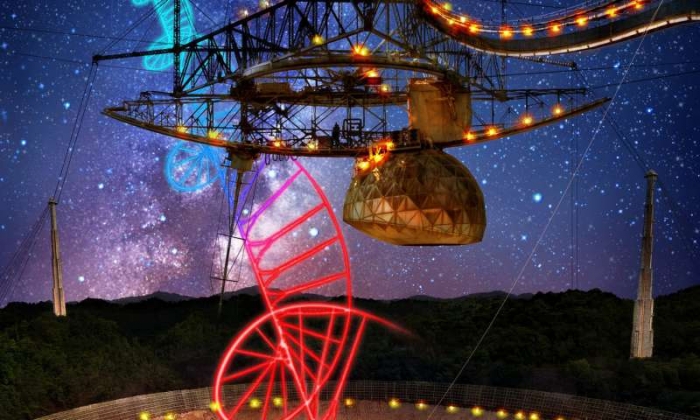Streaking across the sky with a luminosity far greater than the sun’s, fast radio bursts (FRBs) remain powerful yet mysterious phenomena. They were discovered in 2007 when curiosity inspired the astronomer Duncan Lorimer to search the farthest reaches of space, with the FRBs being powerful enough to surpass the typical limitations of scientific equipment. Over a decade later, these transient radio phantoms remain a puzzle for modern astronomers; they travel for billions of years with no discernable pattern, only to emit waves for milliseconds. They are reminiscent of the radio waves emitted by pulsars, rotating stars that release waves of electromagnetic radiation like a lighthouse. However, FRBs are much brighter, travel much further, and had not been found to occur in the same spot twice until FRB 121102 was observed in 2012.
“Fast radio bursts are like flashes, they occur randomly in the sky,” Shriharsh Tendulkar, postdoctoral fellow at the McGill Space Institute, said. “We don’t know where the next one will occur so we search a large area of the sky, [however, with FRB 121102,] we knew the location very precisely and we knew this thing repeats, so we knew that we could point at it and keep recording data.”
An international team of astronomers—whose ranks included Tendulkar and Victoria Kaspi, professor of physics and director of the McGill Space Institute—conducted a study of FRB 121102 and found evidence of huge distortions in the direction of the radio waves. The astronomers concluded earlier this month that this “twisting” or “rotation” of the radio waves can be sourced to the Faraday effect, a phenomenon describing the influence of magnetic fields on waves.
“[FRB 121102] had to have propagated through a strong magnetic field to see that kind of twisting in the electric field,” Kaspi said. “Nobody’s ever seen anything that strong except near really massive black holes like the one in the center of the galaxy.”
There are no known phenomena that can rival the magnetic influence of black holes, which can have a million times more mass than the sun. This suggests that the radio waves pass near a black hole. However, this theory is the result of applying familiar understandings to the observable effects, rather than observations of the environment actually surrounding FRB 121102. Thus, it remains unclear what exactly is exerting the immense magnetic field.
“We’re sure the magnetic field is really high, but we don’t know what causes it,” Tendulkar said. “It is possible that there is some other exotic shell around [FRB 121102] which we don’t completely understand. There are theoretical models where, if you have a supernova explode, the shell that remains after the explosion—in certain cases—could cause a rotation measure that high.”
The next tool for unshrouding the mysteries of FRBs will come in the form of the Canadian Hydrogen Intensity Mapping Experiment (CHIME). Although CHIME was originally conceived to study dark energy, it is incidentally perfect for detecting FRBs; whereas only 27 of these anomalies have been observed so far, Tendulkar predicts that CHIME will enable between 5 and 50 detections per day. However, as CHIME is currently still under construction in British Columbia, the recently damaged Arecibo Observatory telescope in Puerto Rico remains crucial for locating FRBs.
“We’re really proud they put the telescope on the front page [of the academic journal Nature] because Puerto Rico got really devastated by Hurricane Maria, and the telescope in particular suffered quite a bit of damage,” Kaspi said, referencing awareness for victims of the hurricane and her team’s findings being published on the cover of Nature. “It’s a really bad scene in Puerto Rico but they’ve been working around the clock to get the observatory back up and running in addition to many other basic needs.”
Scientists are eager to see how new technologies and substantive data will help unravel the mysteries of the FRBs.
“It’s always fun to have a brand new problem to work on,” Kaspi said. “Nature didn’t have to give us this lovely gift, but nature gave us the gift and we were in the right place at the right time to be able to make progress.”






